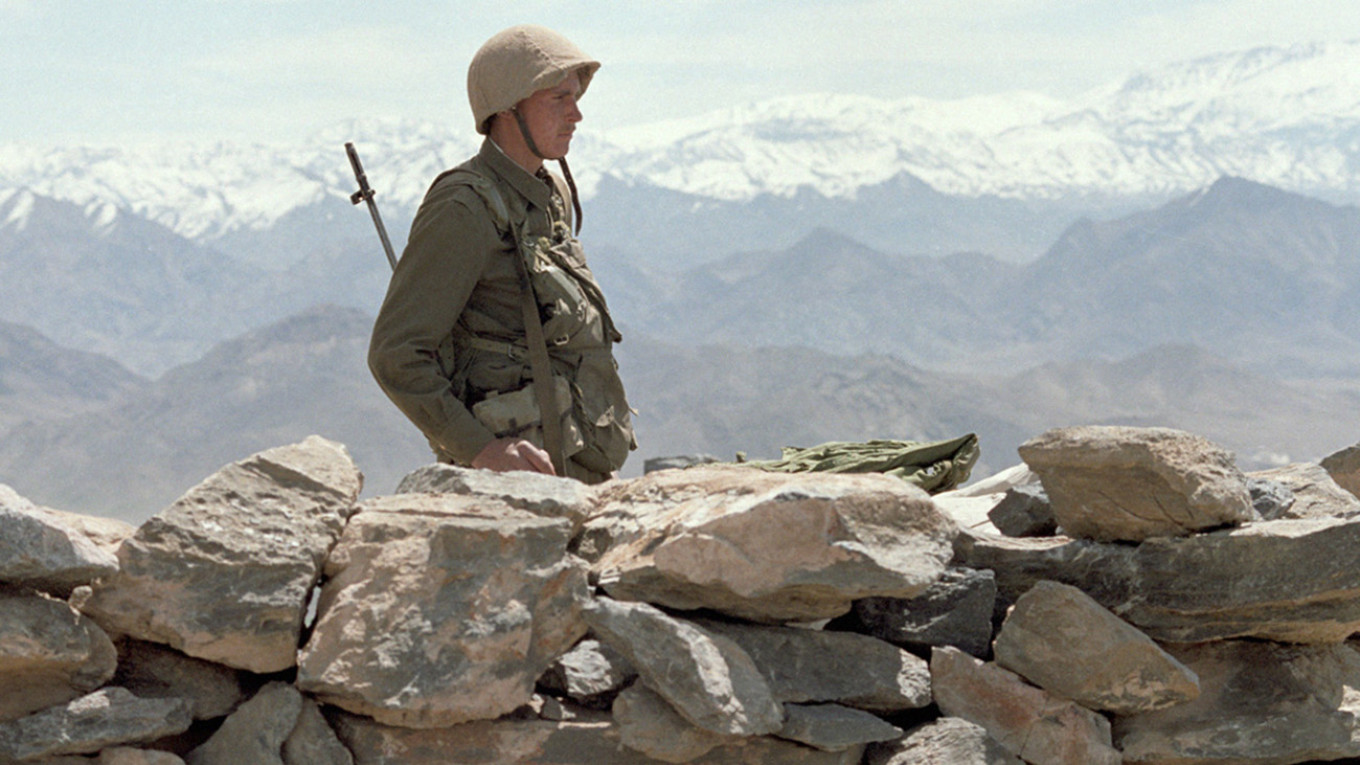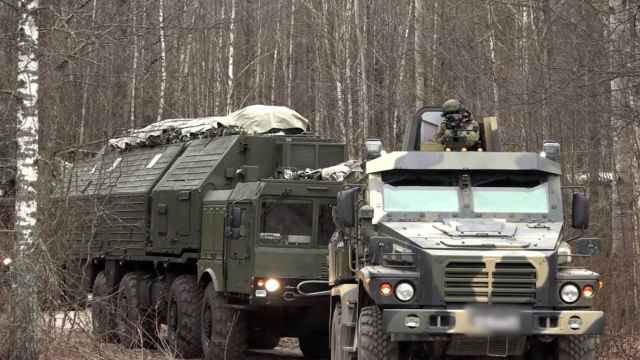This month 40 years ago, the military phase of the Soviet Union’s military intervention in Afghanistan commenced with units of the 40th Soviet army crossing en masse into this Central Asian country to support a coup that would replace Hafizullah Amin with Babrak Karmal at the helm of the Democratic Republic of Afghanistan (DRA). This intervention lasted for nearly a decade.
However, it did not only fail to firmly anchor Afghanistan to the so-called socialist camp, as Soviet leader Leonid Brezhnev had hoped, but contributed to the demise of the U.S.S.R. by imposing formidable human, financial, economic, political and reputational costs on the already declining empire; needless to say, it caused numerous casualties and widespread grievances among Afghans as well.
More than 15,000 Soviet servicemen were killed in Afghanistan, according to a 2001 study edited by Col. Gen. Grigory Krivosheyev. As for the Afghans, some 800,000-1,500,000 of them died during the intervention, according to one scholarly estimate.
Russian strategists have inferred a number of important lessons from the experiences of the so-called Limited Contingent of Soviet Troops in Afghanistan (OKSVA) and I have reviewed them in a recent paper on the subject.
Of these lessons, seven stand out for the U.S and its allies to consider applying as they look for ways to end their own military campaign in this Central Asian country.
Lesson 1: Do not try to mold your local allies in your own image. Empower them instead
The Soviet Union spent an estimated total of $50 billion on OKSVA operations and training the forces of the Democratic Republic of Afghanistan (DRA) in 1979-1989.
Yet DRA troops proved unable either to hold on to territorial gains made by the Soviet 40th Army — which made up the bulk of OKSVA — or to withstand rebel offensives after Moscow withdrew the army and then discontinued aid. "How did it happen that 2,000 advisers, including colonels and generals, failed to create a single fully combat-capable and reliable unit in the Afghan army?” KGB general Leonid Shebarshin asked in a 1992 memoir written after more than 20 tours of duty in Afghanistan.
“How did it happen that the structure of the Afghan armed forces was created exactly according to our model and the experience of a nine-year war did not yield any changes in that structure?”
In Shebarshin’s view, one reason the training of Afghan troops proved ineffective was that the Soviet commanders never learned how to delegate powers to their trainees: “We did teach something to Afghans, no doubt. But mainly we ordered them around and commanded them, ‘stitching them on’ to our operations, imposing our decisions, while loudly shouting about the weak fighting capacity of the ally.”
Lesson 2: You cannot succeed in a military intervention unless the side on whose behalf you intervene is willing to fight for your joint cause
No amount of training and empowering your local allies will help an intervention succeed unless those allies are actually willing to fight for your joint cause.
The Soviets’ goal was to empower a particular faction of the People's Democratic Party of Afghanistan (PDPA), but that group did not command enough local support to sustain the fight. Legions of DRA soldiers simply deserted: 34,000 did so in 1983 alone, according to one Russian account.
As suggested above, Soviet commanders complained repeatedly about the Afghan authorities’ failure to hold on to territory captured by Soviet forces. “There is not a single piece of land left in this country that a Soviet soldier has not taken, yet most of the territory is in the hands of the rebels,” Sergei Akhromeyev, first deputy chief of the General Staff, told a Politburo meeting in 1986. Indeed, as of that year, only 8,000 of some 31,000-35,000 villages were under DRA government control, according to then head of the PDPA, Mohammad Najibullah. Commander of the 40th Soviet Army Gen.
Boris Gromov in his book offered the following explanation of some DRA forces’ reluctance to fight: “Obviously, they understood that sooner or later the war would end and there would be no one to face the music but them.”
Lesson 3: When leaving, leave…
Describing how he engineered the withdrawal of the 40th Army in his book, Gromov does not cite the popular Russian adage “when leaving, leave” (sometimes attributed to Cicero). However, the description itself proves that he persistently tried to do just that despite pressure from Najibullah, who had become the DRA’s pro-Moscow leader. In 1988, “the government of Afghanistan made truly ‘heroic’ efforts to stop the 40th Army from leaving at any cost,” Gromov wrote. For instance, the Afghan Defense Ministry made repeated attempts to draw Soviet troops into “large-scale combat.”
Reacting to pressure from Najibullah, the Soviet leadership considered several options for leaving part of its military contingent in Afghanistan, but eventually rightly concluded that regular troops should not stay and withdrew all personnel except for some advisors. Had Gromov not been so persistent, Najibullah may have succeeded in persuading Moscow to keep the troops in-country. The result would have been a continued stalemate in which DRA forces controlled less than 20 percent of the country’s territory while Soviet troops kept killing and getting killed.
Lesson 4: …but before you leave, take time to secure firm and enforceable agreements that would not only meet your own minimum requirements for a negotiated settlement, but also those of your local allies
The Soviet leadership was so keen to withdraw from Afghanistan in the late 1980s that they failed to add a POW/MIA clause to the Geneva Accords of 1988, which ended the war with three Afghan-Pakistan bilateral agreements and a declaration on international guarantees, signed by the U.S. and the Soviet Union.
While the latter obliged Washington and Moscow to cut aid to the warring factions in Afghanistan, other states — including Pakistan, Saudi Arabia and other sponsors of the Afghan mujahedeen — either were not bound by the accords or ignored them, continuing to supply aid. The Soviets should have tried harder to obtain enforceable guarantees from such external stakeholders as well as to ensure the return of POWs to the USSR, according to Gen. Gromov and deputy chief of the Soviet General Staff Gen. Valentin Varennikov.
At the time, however, Soviet leader Mikhail Gorbachev and his foreign minister, Eduard Shevardnadze, “who concluded these treaties, seemed to be concerned only about convincing the public that they were not personally involved in the deployment of Soviet troops to Afghanistan and to disclaim responsibility for it. Soviet soldiers and officers who were in captivity ... were of little interest to them,” according to a book by Gen. Alexander Lyakhovsky, who served in Afghanistan in 1987-1989.
The Soviet leaders could also have done more to press their own client into reconciliation when they were still providing the DRA with substantial aid, using this aid as leverage. According to General of the Army Makhmut Gareyev, the chief Soviet military advisor to the Afghan army after the withdrawal, “there were no tangible results in the implementation of the policy of national reconciliation. The concept of political settlement in Afghanistan put forward by the Afghan leadership was perceived by many [PDPA] party leaders as a loss of its current leading role in governing the country and, for many members of the leadership, as having to leave the government positions they held.”
Lesson 5: Prevent mission creep even after you leave
Even after regular Soviet troops were withdrawn, costly mission creep remained a danger — one that was narrowly avoided, according to Gareyev. With only 30 Soviet advisors and some guards left in Afghanistan, Gareyev recalled in his book how Dmitry Yazov, the-then defense minister, told him — when dispatching him to Afghanistan in 1989 as chief military advisor — that his task was to make sure Najibullah’s regime survives for at least three or four months; if it did, Yazov argued, then maybe a political resolution of the conflict could be attained in that time.
But, seeing Najibullah’s regime last for a year after the OKSVA withdrawal, some top officials in the KGB and foreign ministry began to assert that Najibullah’s troops and their Soviet advisors had been on the defensive long enough and should now initiate “decisive, offensive actions in all directions,” Gareyev wrote. He claimed to have had a hard time convincing some leaders in Moscow to refrain from such “adventurist aspirations” that “could only lead to the most negative consequences.”
Lesson 6: Take care of your soldiers even after the war is officially over
Describing how the last battalion of the 40th Army crossed the Friendship Bridge from Afghanistan into Uzbekistan under his command on Feb. 15, 1989, Gen. Gromov wrote how ordinary people embraced the returning soldiers heartily, but that “not a single commander in Moscow even thought about how to organize greeting” them.
He also wrote that some of the Soviet citizens welcoming home his last battalion were relatives of Soviet soldiers who had been killed in Afghanistan. “Some of them, having received official notices and even having buried their loved ones, still hoped: What if he was alive, what if he would come out now?” Gromov wrote.
Of those who did return, many suffered from post-traumatic disorders that often went untreated, while also encountering public disapproval from those with anti-war sentiments, much as Vietnam veterans initially did in the U.S. According to a book by KGB officer Vladimir Garkavy, who completed multiple tours of duty in Afghanistan, “despondency, apathy and despair have become the companions of many veterans.” Garkavy wrote that some 500 veterans of the Soviet war in Afghanistan committed suicide in 2007 alone.
Lesson 7: Last but not least — be willing to learn the lessons
In the summer of 1981, the Soviet Defense Ministry decided to send military district commanders from the USSR to Afghanistan for several days to learn the lessons gleaned there by OKSVA. Many of these senior officers showed no real interest, however, thinking the lessons would be of little use to them as they were more focused on a possible large-scale confrontation with NATO, according to Gromov.
His book came out in 1994 as Russian troops were fighting an anti-insurgency campaign in the mountains of Chechnya, which was in some ways similar to Afghanistan, but did not seem to have benefitted much from possible past lessons; Gromov himself, ironically, did not draw a parallel between the two wars.
The last Soviet leader, Mikhail Gorbachev, also faulted the Soviet top brass for failing to infer and learn some lessons from the Afghan war. “I must … tell our military that they are learning poorly from this war,” he told a Nov. 13, 1986, meeting of the Politburo.
The Soviet intervention in Afghanistan was not what bankrupted the Soviet Union or led to its collapse, contrary to U.S. President Donald Trump’s take on Soviet Russia’s experiences there. Rather, as Yegor Gaidar convincingly demonstrated, a combination of structural, economic and other factors played the lead role in the demise of the Soviet empire. However, that intervention, which caused horrendous hardship for many Afghans, did contribute to the collapse of an empire.
The Soviet leaders did eventually realize some of the mistakes they had made in Afghanistan and sought to correct them.
But not all erroneous decisions, once made, can be reversed. Therefore, the U.S. and its allies would do well to learn from those mistakes, rather than rely only on their own, even if some Russian legislators have recently tried convince their compatriots that the Soviet intervention was the right thing to do.
A Message from The Moscow Times:
Dear readers,
We are facing unprecedented challenges. Russia's Prosecutor General's Office has designated The Moscow Times as an "undesirable" organization, criminalizing our work and putting our staff at risk of prosecution. This follows our earlier unjust labeling as a "foreign agent."
These actions are direct attempts to silence independent journalism in Russia. The authorities claim our work "discredits the decisions of the Russian leadership." We see things differently: we strive to provide accurate, unbiased reporting on Russia.
We, the journalists of The Moscow Times, refuse to be silenced. But to continue our work, we need your help.
Your support, no matter how small, makes a world of difference. If you can, please support us monthly starting from just $2. It's quick to set up, and every contribution makes a significant impact.
By supporting The Moscow Times, you're defending open, independent journalism in the face of repression. Thank you for standing with us.
Remind me later.







